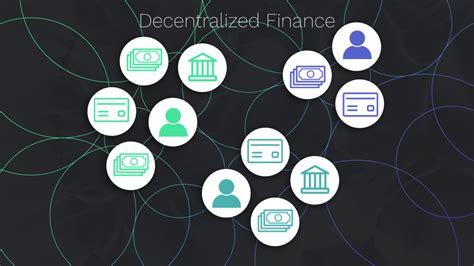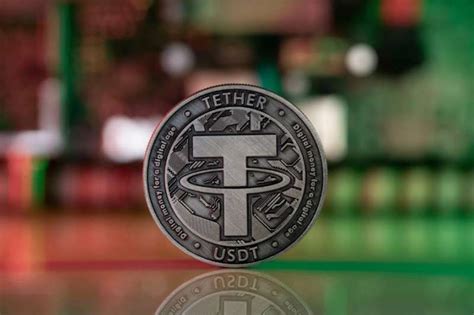In the world of finance, the towering institutions of Wall Street and the centralized banking systems that govern our money have long been the undisputed titans. They are the intermediaries for nearly every loan, investment, and transaction. But a powerful new technological movement is challenging this age-old paradigm, proposing a radically different vision for the future of money. This movement is Decentralized Finance, or DeFi, and it represents one of the most significant and disruptive innovations built upon blockchain technology.
For decades, access to sophisticated financial tools has been a privilege, guarded by gatekeepers and wrapped in complexity. DeFi seeks to dismantle these walls, creating an open, permissionless, and transparent financial system that is accessible to anyone with an internet connection. It’s not simply a new way to send money; it’s a complete, parallel financial ecosystem being built from the ground up with code.
This comprehensive guide will journey deep into the DeFi revolution. We will demystify the core concepts that power this ecosystem, from the blockchain bedrock to self-executing smart contracts. We will explore the vibrant landscape of DeFi applications—from lending and borrowing to trading on decentralized exchanges. Finally, we will provide a balanced view of the immense opportunities and the significant risks involved, giving you the foundational knowledge needed to understand this financial frontier.
What is DeFi? A Shift from Trust to Truth
At its heart, Decentralized Finance is a collective term for financial products and services that operate on a decentralized, public blockchain, most commonly Ethereum. The core philosophy is to remove the need for trusted third-party intermediaries—like banks, brokers, and exchanges—and replace them with automated, incorruptible code.
Think about a traditional bank loan. You must apply, go through a credit check, and be approved by the bank, which acts as a central authority. The bank controls the entire process and dictates the terms. In DeFi, this entire process is handled by a smart contract—a self-executing piece of code on the blockchain. The rules of the loan (collateral, interest rate, repayment schedule) are written into the contract. The code acts as the trustless intermediary, executing the terms automatically and transparently for all to see. This fundamental shift—from trusting institutions to trusting verifiable code—is the essence of the DeFi revolution.
The Core Pillars: Technology Powering DeFi
DeFi isn’t magic; it’s a powerful combination of groundbreaking technologies working in concert. Understanding these pillars is key to grasping how this new financial system functions.
A. Blockchain as the Immutable Ledger: The entire DeFi ecosystem is built upon the foundation of blockchain technology. A blockchain is a distributed, unchangeable public ledger that records transactions in a secure and transparent way. Every transaction is verified by a network of computers, making it nearly impossible to alter or cheat the system. This provides the secure and transparent base layer upon which all DeFi applications are built.
B. Smart Contracts: The Automated Engine: If the blockchain is the foundation, smart contracts are the engine of DeFi. These are programs stored on the blockchain that automatically execute when specific conditions are met. They are the digital rulebooks that govern how DeFi applications work without the need for human intervention. For example, a smart contract for a lending protocol will automatically lock a borrower’s collateral and release it only when the loan is fully repaid. This automation reduces costs, eliminates human error, and ensures the rules are applied fairly and consistently.
C. Oracles: Connecting Blockchain to the Real World: Blockchains and smart contracts are incredibly secure, but they are also isolated from the outside world. They cannot, on their own, access real-world data like the current price of Bitcoin, the outcome of an election, or weather data. This is where oracles come in. Oracles are third-party services that act as a secure bridge, feeding external, off-chain information to smart contracts. This allows DeFi applications to create more complex financial products, such as derivatives based on real-world asset prices.
Exploring the DeFi Ecosystem: Key Applications
The true power of DeFi is revealed in its diverse and rapidly expanding ecosystem of applications. These protocols, often referred to as “money legos,” can be combined and integrated to create novel financial strategies.
A. Decentralized Lending and Borrowing: This is one of the most popular sectors in DeFi. Platforms like Aave and Compound allow users to lend their crypto assets to earn interest or borrow assets by providing collateral. The process is entirely automated by smart contracts. * How it Works: Lenders deposit their assets into a “liquidity pool.” Borrowers can then take loans from this pool, but they must first lock up a different crypto asset as collateral. This loan is typically over-collateralized, meaning the value of the collateral is significantly higher than the loan amount (e.g., providing $1,500 worth of Ethereum to borrow $1,000 worth of a stablecoin). This protects the lenders in case of a default.
B. Decentralized Exchanges (DEXs): DEXs allow users to trade cryptocurrencies directly with each other without a central intermediary holding their funds. Unlike traditional exchanges like Coinbase or Binance, you always maintain custody of your assets. * How they Work: Most modern DEXs, like Uniswap and Sushiswap, use an innovative model called an Automated Market Maker (AMM). Instead of matching individual buy and sell orders in a traditional order book, users trade against a liquidity pool. Other users, called liquidity providers, supply pairs of assets (e.g., ETH and USDC) to these pools and earn trading fees in return for providing this service.
C. Stablecoins: The Bedrock of Stability: The high volatility of cryptocurrencies like Bitcoin and Ethereum can make them unsuitable for everyday financial transactions. Stablecoins solve this problem. These are cryptocurrencies designed to maintain a stable value, typically pegged 1:1 to a fiat currency like the U.S. Dollar. Stablecoins like USDC (backed by real dollars in a bank) and DAI (a decentralized stablecoin backed by crypto collateral) are the lifeblood of DeFi, enabling users to trade, lend, and earn yield without being exposed to wild price swings.
D. Yield Farming and Liquidity Mining: These are more advanced DeFi strategies for generating high returns on capital. * Yield Farming: This is the practice of strategically moving your crypto assets between different lending and liquidity protocols to maximize your interest and fee earnings. It’s akin to chasing the best interest rates between different banks, but on hyper-speed. * Liquidity Mining: This is a specific type of yield farming where users provide liquidity to a protocol’s pool and are rewarded not just with trading fees, but also with the protocol’s own native governance token. This was a key innovation that helped many DeFi projects bootstrap their growth.
The DeFi Promise vs. The DeFi Perils

While the potential of DeFi is immense, it is also an emerging technology with significant risks. A balanced perspective is crucial.
A. The Advantages: Why DeFi is Gaining Traction 1. Accessibility: Anyone with a crypto wallet and an internet connection can access DeFi services, breaking down geographical and economic barriers present in traditional finance. 2. Transparency: Every transaction is recorded on the public blockchain, offering an unprecedented level of transparency that is impossible in the opaque world of traditional finance. 3. User Sovereignty: You are in full control of your assets. There is no central entity that can freeze your account or deny you access to your funds. 4. Efficiency and Speed: By removing intermediaries and automating processes with smart contracts, DeFi can offer faster transactions and lower fees than its traditional counterparts. 5. Rapid Innovation: The open-source and “money lego” nature of DeFi allows developers to build and launch new financial products at a blistering pace.
B. The Risks: Navigating the DeFi Minefield 1. Smart Contract Vulnerabilities: If there is a bug or exploit in a protocol’s code, it can be hacked, potentially leading to a complete loss of user funds. This is the single biggest risk in DeFi. 2. Impermanent Loss: A unique risk for liquidity providers on DEXs. If the price of the assets in a liquidity pool changes significantly, the value of the provider’s stake can be less than if they had simply held the assets in their wallet. 3. Regulatory Uncertainty: Governments around the world are still deciding how to regulate DeFi. Future regulations could impact the accessibility and legality of certain protocols. 4. Complexity and User Experience: Interacting with DeFi protocols requires a certain level of technical knowledge and can be daunting for beginners, leading to costly mistakes.
The Future: DeFi, Web3, and the New Financial Internet
DeFi is not an isolated trend; it is a foundational component of the broader Web3 movement—the vision of a new, decentralized internet. The future of DeFi will likely involve:
- Scalability Solutions: Technologies like Layer 2 rollups are making DeFi transactions faster and dramatically cheaper, overcoming the network congestion issues that have plagued Ethereum.
- Decentralized Autonomous Organizations (DAOs): Many DeFi protocols are governed by DAOs, where holders of the governance token can vote on the future direction of the project, creating a community-owned and operated financial system.
- Integration with the Real World: We are beginning to see the “tokenization” of real-world assets, such as real estate and stocks, which will eventually be tradable and usable as collateral within the DeFi ecosystem, blurring the lines between traditional and decentralized finance.
A New Financial Frontier

Decentralized Finance represents a fundamental paradigm shift in how we think about financial services. It replaces a system based on trusted intermediaries with one based on verifiable code, offering a tantalizing glimpse into a more open, transparent, and globally accessible financial future. However, this new frontier is not without its dangers. It is the “Wild West” of finance, filled with immense opportunity but also significant risk.
Understanding the core principles, the key applications, and the inherent risks is the first step toward navigating this exciting and transformative space. DeFi is still in its early innings, but its potential to reshape the global economic landscape is undeniable.











